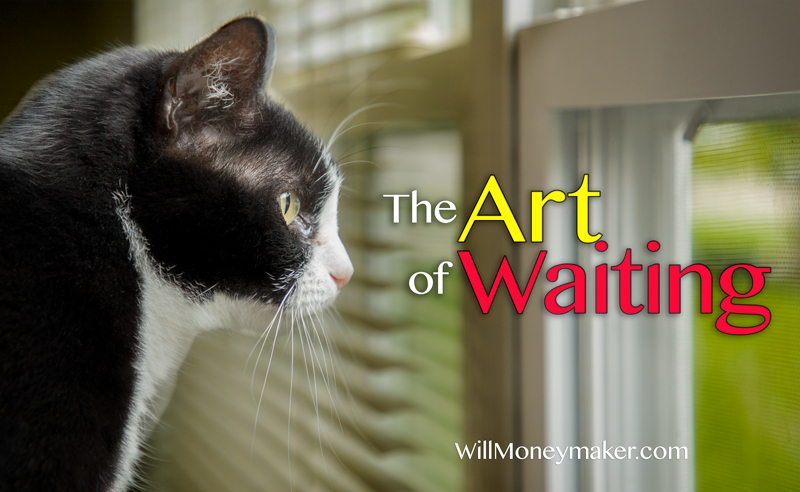One of the first things that every photographer learns is that photography is in large part, a waiting game. Oh, the things you’ll find yourself waiting for over the years! The perfect lighting, the right action, the ideal weather. You’ll have an idea for autumn photography in the spring and find yourself waiting for the seasons to change. You’ll be waiting to go on photography trips and waiting to save up money for that next new gadget or gizmo that belongs in your gear bag.
There is always something to wait for, which is why it is frustrating to hear that you should wait before you take a photograph. However, I’ll say it anyway! I think there is validity in waiting, that the act of waiting for itself can become an art.
The kind of waiting that I am referring to is a little bit different, however. I would say that you should consider composing your image, then waiting until you are ready to take the photo — at least some of the time, anyway, as a creative exercise. Why would you want to do this? Let me explain how to wait with this method, then I will shed some light on why this technique could prove valuable.
Compose, Then Wait
By composing, then waiting, I mean exactly that. Physically set your camera up on a tripod, line up the frame as you’d like it to be in the general composition that you want, following the Rule of Thirds, or whatever other compositional rules that you are working with. Get all of your base elements into place. Make sure that those extra pieces, like rocks, trees, and other such elements, are in place just how you want them. Then, sit back and wait. Watch through the viewfinder or the live view and see what happens.
Now that you are waiting, you’d probably like to know just what it is that you are waiting for. The answer to that is easy. You’re waiting for something unique to happen. In this day, when it seems as if everything has already been photographed, it is a challenge to find subject material that seems truly unique. Something that stands apart from the potentially dozens, hundreds or thousands of images like yours.
But, how does waiting help you achieve that uniqueness? In practice, you are waiting for one of two things to happen once you’ve composed the frame. Let’s take a look.
Waiting for Action
One thing that you could be waiting for once you’ve composed your frame is a little bit of action or perhaps an element that is not currently present in your image but could be, if only you are willing to wait long enough. Perhaps you are waiting for wildlife to enter your photo — a squirrel frolicking in the foreground or a bird that lands in just the right spot and then you snap the image. Maybe you’re looking for the perfect cloud formation to come along and break up the solid wash of blue sky. Or, you could be waiting for something like the breeze, blowing gently and bending the grass at just the exact right pleasing angle before you take the photograph.
Whatever the case may be, you are waiting for that one right moment to take the photograph, not endlessly snapping to see what works — and potentially missing those perfect moments in between your rapid-fire shots!
Waiting to Make Observations
You could be waiting for just the right bit of action before you take the photo but I would argue that there is another, even more, important thing to wait for and that is the observations that can only be made when you’ve stayed in an area long enough to truly come to know it. The longer you sit in an area and wait, the more you will come to learn about that area. You’ll absorb details that you hadn’t noticed before and you’ll see movement that only happens with the passage of time. With that knowledge, you’ll have more opportunities, more ideas, more tools at your disposal to create art.
Now, I realize that sounds a bit confusing, so let’s look at examples of the kinds of things you can learn from observation as you wait patiently beside your camera.
Perhaps, after enough time, you observe the way that clouds leave shadows underneath them as they float high above the landscape. Now, having witnessed this, you can wait for the perfect cumulus cloud to come along, leaving a dark shadow underneath it at just the right spot in the meadow that you are overlooking. You may see that as the breeze strengthens, rays of light appear underneath trees because the leaves are shifting around in just the right way to let light through. You may also notice a sort of geometry that you’d not seen before, the vertical, cylindrical shapes of trees contrasting sharply with the horizontal line of the stream that runs perpendicular to the trees in the distance.
It could be that your observations are so great that you abandon your original composition entirely in favor of something new. Whatever happens, simply sitting and waiting, observing the kinds of unexpected changes that can happen in an already composed frame, observing your surroundings in their entirety as you wait for that change, these are both methods to capture something that is not only unique but also to help you become inspired.
In short, the point of this exercise is not necessary to create that perfect photo with the frame that you set up at the beginning of your excursion. Rather, it is to help you think about your surroundings in a new, fresh way, a way that may well be exactly what you need in order to create something marvelous. And, by looking at your composition, observing it over time through the confines of the frame you have composed, you’ll find yourself with a different perspective than you would gain from simply looking at your surroundings as a whole. The frame itself is a window for you to look through, one that helps you to eliminate distractions so that you can focus on your true goal.
Of course, it isn’t necessary to spend minutes or hours waiting beside your camera for every photograph that you take. But doing this exercise once in a while is a good way to help fortify your creative thought processes, to help you train yourself to be more observant, and to help you understand that with time, everything that you see before you have the capacity to change. Part of the art of waiting is knowing when or how those changes might come about so that you can put them to use in your photographs.





